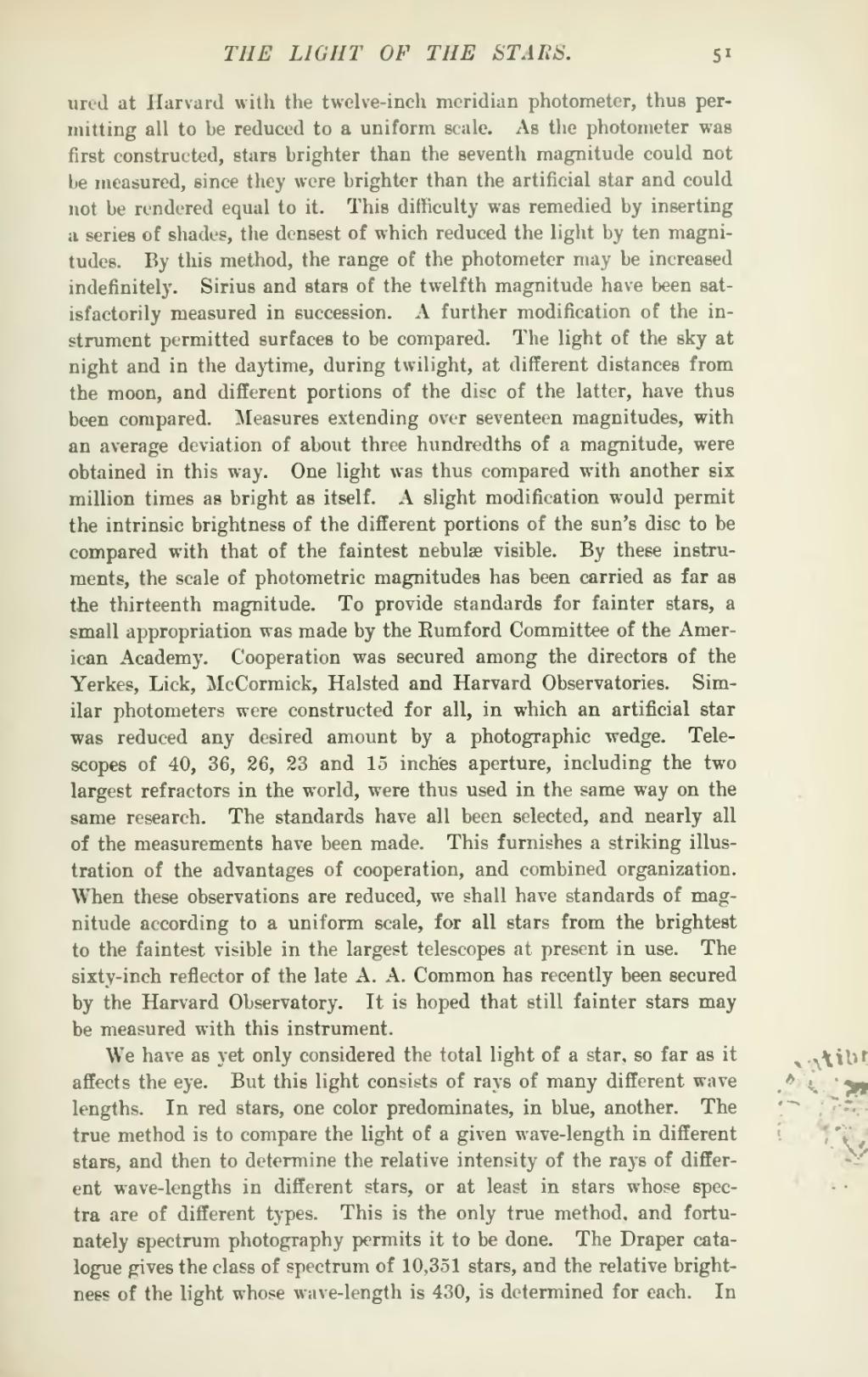ured at Harvard with the twelve-inch meridian photometer, thus permitting all to be reduced to a uniform scale. As the photometer was first constructed, stars brighter than the seventh magnitude could not be measured, since they were brighter than the artificial star and could not be rendered equal to it. This difficulty was remedied by inserting a series of shades, the densest of which reduced the light by ten magnitudes. By this method, the range of the photometer may be increased indefinitely. Sirius and stars of the twelfth magnitude have been satisfactorily measured in succession. A further modification of the instrument permitted surfaces to be compared. The light of the sky at night and in the daytime, during twilight, at different distances from the moon, and different portions of the disc of the latter, have thus been compared. Measures extending over seventeen magnitudes, with an average deviation of about three hundredths of a magnitude, were obtained in this way. One light was thus compared with another six million times as bright as itself. A slight modification would permit the intrinsic brightness of the different portions of the sun's disc to be compared with that of the faintest nebulæ visible. By these instruments, the scale of photometric magnitudes has been carried as far as the thirteenth magnitude. To provide standards for fainter stars, a small appropriation was made by the Rumford Committee of the American Academy. Cooperation was secured among the directors of the Yerkes, Lick, McCormick, Halsted and Harvard Observatories. Similar photometers were constructed for all, in which an artificial star was reduced any desired amount by a photographic wedge. Telescopes of 40, 36, 26, 23 and 15 inches aperture, including the two largest refractors in the world, were thus used in the same way on the same research. The standards have all been selected, and nearly all of the measurements have been made. This furnishes a striking illustration of the advantages of cooperation, and combined organization. When these observations are reduced, we shall have standards of magnitude according to a uniform scale, for all stars from the brightest to the faintest visible in the largest telescopes at present in use. The sixty-inch reflector of the late A. A. Common has recently been secured by the Harvard Observatory. It is hoped that still fainter stars may be measured with this instrument.
We have as yet only considered the total light of a star, so far as it affects the eye. But this light consists of rays of many different wave lengths. In red stars, one color predominates, in blue, another. The true method is to compare the light of a given wave-length in different stars, and then to determine the relative intensity of the rays of different wave-lengths in different stars, or at least in stars whose spectra are of different types. This is the only true method, and fortunately spectrum photography permits it to be done. The Draper catalogue gives the class of spectrum of 10,351 stars, and the relative brightness of the light whose wave-length is 430, is determined for each. In

